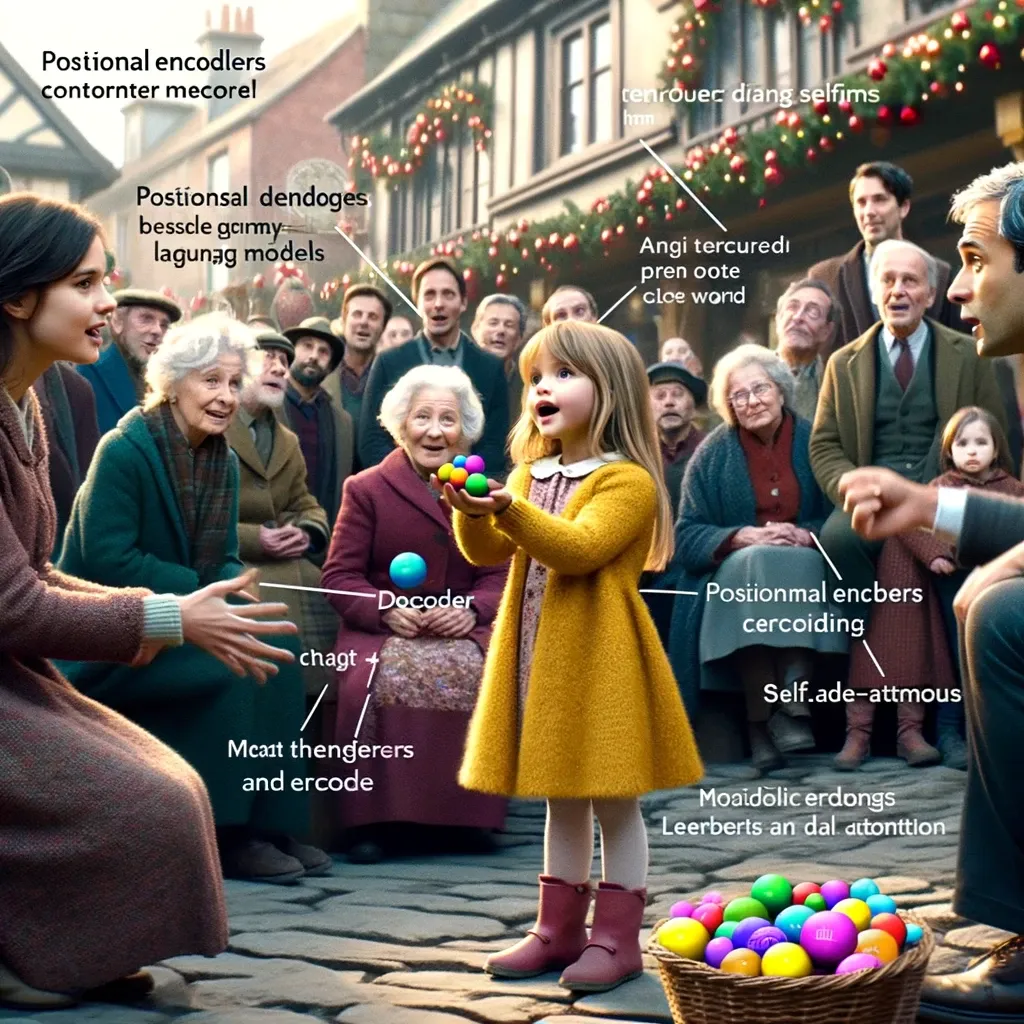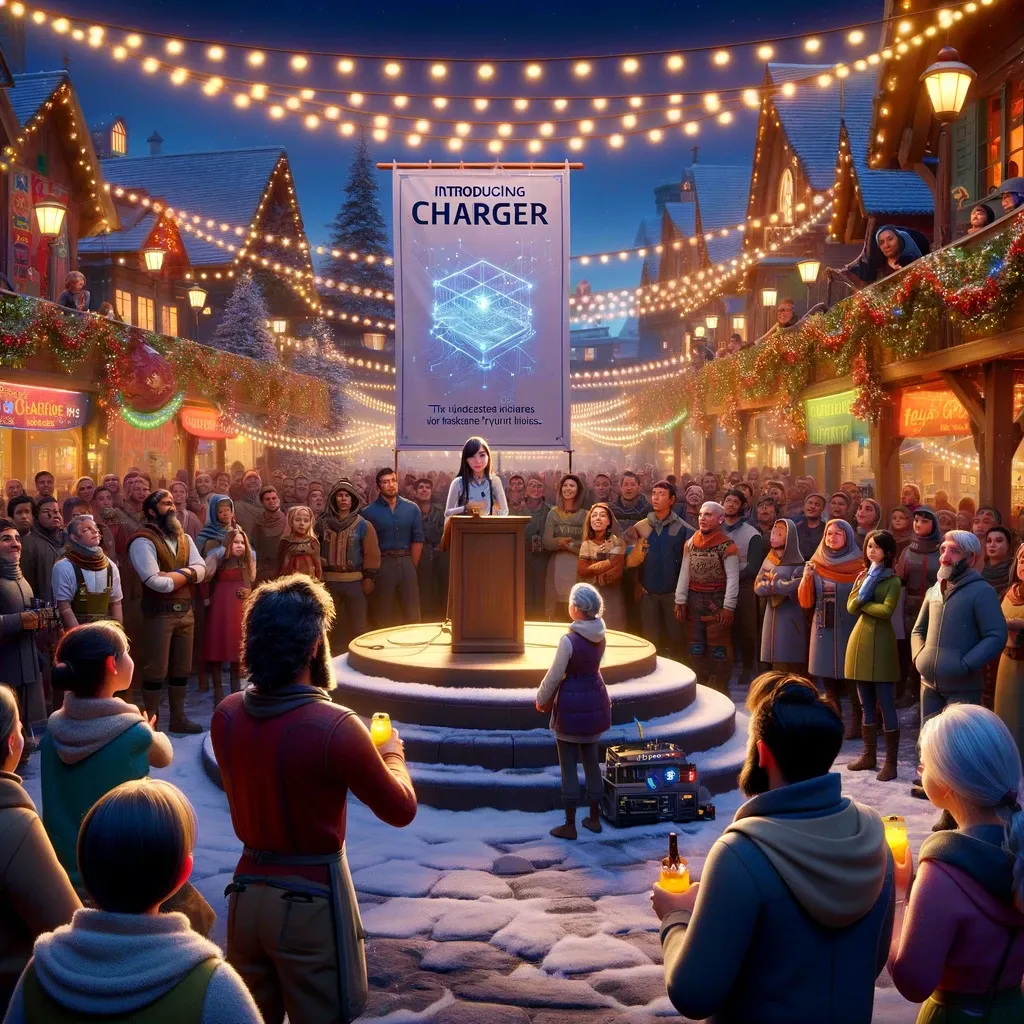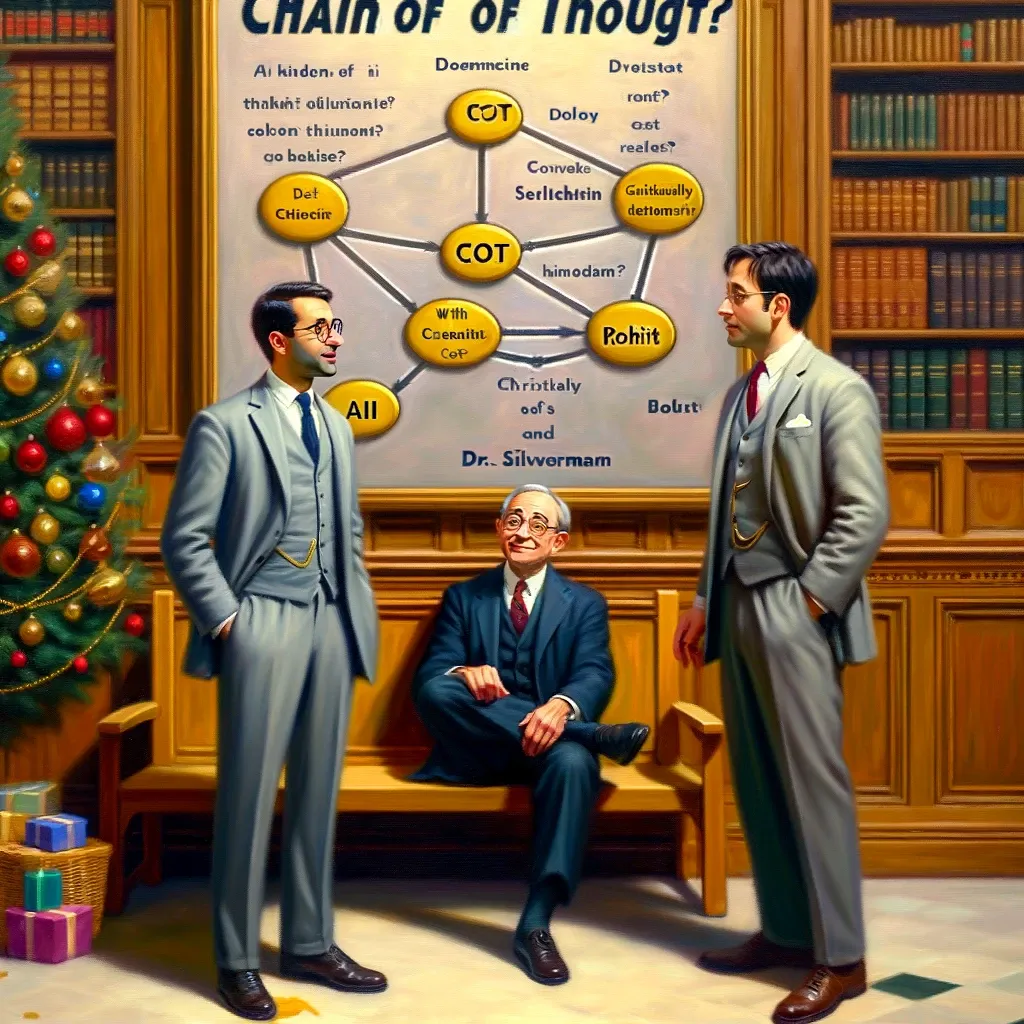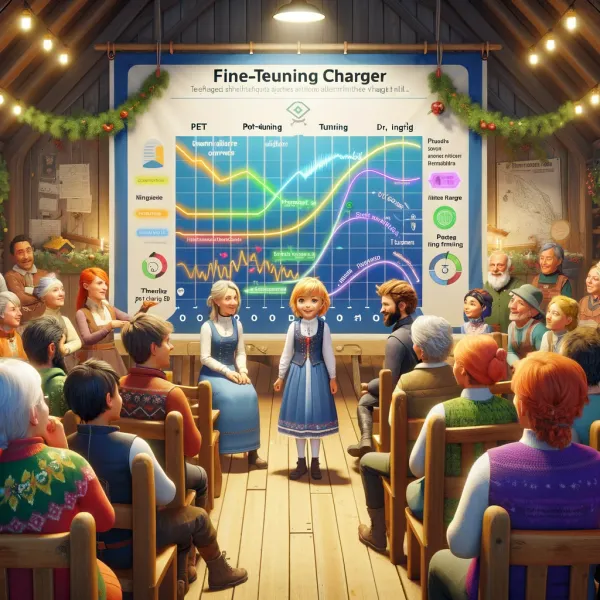The Anticipation
The village square, adorned with festive decorations and buzzing with excitement, set the stage for the much-anticipated competition. Teams from nearby villages had gathered, each eager to showcase their innovations. Eva, with her team and their creation shrouded under a cloth, felt a flutter of nervous excitement.
The village square, usually a hub of quaint tranquility, was today pulsating with energy and anticipation. Colorful banners fluttered in the winter breeze, and the air was filled with an infectious excitement. In the midst of it all stood Eva, her heart racing with a mix of nerves and excitement.
As she stepped onto the makeshift stage, the chatter of the crowd dimmed into an expectant silence. Eva glanced around, her eyes meeting those of her friends, the proud gaze of Dr. Ingrid, and the encouraging nod from Rohit. They were all there, rooting for her.
Clearing her throat, Eva began, "Good afternoon, everyone. I stand here today not just representing my team, but also the spirit of our village, which has always been a cradle of innovation." Her voice, though slightly trembling at first, grew steadier with each word.
"We've all worked tirelessly, and I'd like to extend my deepest gratitude to Dr. Silverman for his guidance, and to Rohit, who has been an incredible partner in this journey." She gestured towards Rohit, who gave a modest wave from the sidelines.
The crowd responded with warm applause, their faces a mix of curiosity and support. The village hadn’t won in years, and the air was thick with hope that maybe, just maybe, this year would be different.
Eva's gaze swept over the audience, taking in the expectant faces. "Today, we're excited to showcase something that we believe is a leap forward in how we interact with technology." Her voice now carried a confidence that resonated with the crowd.
As she spoke, her teammates behind her unveiled a large poster that read, "Introducing Charger - The Future of AI in Your Hands." The crowd leaned forward, their interest visibly piqued.
Eva paused for a moment, letting the anticipation build. She knew that the success of their demonstration could change the village's narrative, reigniting the flame of victory that had been dormant for years.
With a smile, Eva continued, "But before we reveal Charger, let me take you on a brief journey into the world of Large Language Models, or LLMs, the technology at the heart of our invention."
The crowd settled in, listening intently as Eva prepared to demystify the complex world of AI in a way only she could - with clarity, enthusiasm, and a touch of the village's enduring charm.

The Concept
"Our project," Eva continued, "starts with understanding Large Language Models, or LLMs." She noticed a few puzzled faces in the crowd, including the friendly shopkeeper and Dr. Ingrid, who wore a look of intrigued anticipation.
"Think of LLMs like a wise old book that knows a lot of stories," Eva explained. "These models can read, understand, and even write text. They're like the brains behind AI systems like chatbots."
As Eva spoke, Rohit set up a small screen showing a chat interface. "Let's do a quick demo," Eva suggested. "Can someone give me a random topic?"
The shopkeeper shouted, "How about apple pies?"
Eva typed the query into their system. The screen displayed a response not just with a recipe, but also with a brief history of apple pies. The crowd murmured in amazement.
Eva, with a sparkle in her eyes, continued her presentation on Large Language Models (LLMs) to the captivated villagers. "Think of LLMs as a huge library of words and sentences, trained to understand and create language," she began.
"A Large Language Model, indicated by its title, is a model developed using extensive datasets to understand and produce content. In essence, it's an expanded version of a transformer model. This transformer model is a type of neural network structured to understand context and significance by examining the connections within sequential data. They are great for LLMs and have two key parts: positional encodings and self-attention", she said.

Positional Encodings: The Circle Dance of Words
"To explain positional encodings, let's imagine a dance," Eva said, her hands gesturing as if she were drawing a circle in the air. "In a dance, the position of each dancer is crucial. Similarly, in LLMs, where each word falls in a sentence matters."
She picked up a few colored pebbles from a nearby table. "Consider these pebbles as words in a sentence. If we place them in a circle, their position relative to each other tells us about their relationship in the sentence. Just like dancers in a circle, words close to each other are more connected."
Self-Attention: The Art of Listening in a Conversation
Moving on to self-attention, Eva said, "Imagine a conversation at a dinner table. Not everyone listens to everyone equally. You pay more attention to the person you're speaking to. That's self-attention in LLMs. The words in a sentence 'decide' which other words to 'listen to' more."
Self-attention in a sentence can be illustrated with a simple example. Let's take the sentence: "The cat chased the mouse, but it escaped."
"In this sentence, self-attention allows the model to understand the relationships and dependencies between different words", said Eva. "For instance:", she said, "The word it would pay more attention to mouse rather than cat, recognizing that it refers to the mouse, not the cat. This is because, in the context of the sentence, it is more closely related to mouse. Similarly, chased would pay more attention to cat and mouse, as these are the subjects and objects directly involved in the action.", Eva said, looking at Rohit. Rohit nodded in affirmative as agreeing with her as as as acting as a good listener.
"Thus", she said further, "self-attention helps the model to discern which words in the sentence are most relevant to each other, enhancing its understanding of the sentence's overall meaning."
"When a sentence is passed through transformers, it goes through encoders and then decoders. Encoders and decoders play a crucial role in processing and generating language.", Rohit added.
Encoder
"The encoder's primary function is to process the input text. It reads and interprets the sentence or phrases, understanding the context, meaning, and relationships between words. In our previous example, "The cat chased the mouse, but it escaped," the encoder analyzes each word and its relation to the others in the sentence. It captures the nuances of the sentence, like the fact that it refers to the mouse and not the cat.", said Rohit
Decoder
Rohit further said, "The decoder comes into play during the generation of text. Once the encoder has processed the input, the decoder uses this processed information to generate or translate text. For example, in a language translation task, the decoder would take the encoder's processed data and generate a translation in the target language. In other applications like text summarization or question-answering, the decoder produces a summary or an answer based on the encoder's understanding of the input text."
Multi-Head Attention: The Orchestra of Understanding
"To make it even clearer, think of multi-head attention like an orchestra with different sections - strings, brass, woodwinds, and percussion. Each section focuses on its part, but together, they create a harmonious piece. In LLMs, multi-head attention allows the model to focus on different aspects of the language simultaneously, creating a more comprehensive understanding."
As Eva spoke, the villagers, including the shopkeeper, Dr. Ingrid, and her friends, listened intently, their faces a blend of fascination and curiosity. Mo, always eager, asked, "So, it's like the model is having a conversation with itself, understanding and creating language?"
"Exactly, Mo!" Eva exclaimed. "And that's just the beginning. There's more to how these LLMs work, and how they can be applied in real life, which I'll get to next."
The crowd nodded, their interest piqued. Eva's ability to simplify complex AI concepts into relatable analogies had them hooked, eagerly anticipating the next part of her presentation.

The Applications
Eva, with a gleam of excitement in her eyes, continued her presentation on Large Language Models to the eager villagers. "Now, let's talk about what these LLMs can do. Imagine them as versatile artists, capable of painting a wide array of pictures."
- "First, think of AI assistants," Eva began. "Just like a helpful neighbor who assists you with various tasks, LLMs power AI assistants that can schedule your appointments, make reservations, or even help with programming. Picture 'ChatGPT' - thats like your smart companions, always ready to assist."
- "Then there are chatbots," she continued. "Imagine a friendly librarian who knows the answer to every question. You can have chatbots specialized in certain topics, like one we created to answer questions about our village's history."
- "LLMs are like storytellers," Eva explained. "They can write captivating stories, craft marketing content, or even generate code. It's like having a creative writer who can continue any story you start."
- "Think of LLMs as skilled translators," she added. "They can effortlessly translate languages and even turn your words into computer code. It's like having a personal interpreter who understands every language, including computer languages."
- "Next, Imagine a summarizer," Eva said. "LLMs can read long documents and give you a concise summary, like a friend who reads a book and tells you the key points."
- "And for search," Eva continued, "LLMs are like insightful detectives. They understand your questions and find the most relevant answers, not just based on keywords but on the actual meaning of your query."
Eva concluded, "These are just a few examples. LLMs can personalize experiences, recommend things you'll love, create interactive games, and so much more. They're not just models; they're gateways to endless possibilities."
The villagers, including Dr. Ingrid, the shopkeeper, and her friends, listened with rapt attention, their minds alive with the potential of LLMs. Eva's presentation was not just informative but also a journey into the future of technology, leaving everyone in awe of the possibilities.
Different types of LLMs
Alex, known for his jovial nature, stepped up with a grin. "Alright, let me add a bit of flavor to this tech talk," he began, his voice brimming with enthusiasm. "Let's dive into why not all Large Language Models, or LLMs, are the same."
Model Architecture: The Structural Variety
"Think of LLMs as buildings with different designs," Alex began. "Some are like grand castles, built for general purposes and grandeur. Others are more like specialized observatories, designed for specific tasks. Their architecture dictates their capabilities, whether it's handling a wide range of tasks or excelling in particular areas."
Data: The Core Substance
"Data is the lifeblood of these models," he continued. "Some models, like the colossal PaLM 2, are fed with an ocean of data, making them incredibly knowledgeable. Others might have less data to learn from, but it's carefully curated, like a gourmet chef selecting only the finest ingredients."
Parameter Count: Measuring Complexity
"Parameters in LLMs are like the nuts and bolts in machinery," Alex said with a flourish. "The more you have, like in GPT-3's 175 billion, the more complex and capable the model. It's like comparing a supercomputer to a regular laptop. Each has its purpose, but their capabilities differ vastly."
Training Objective: Tailoring the Function
"Some LLMs are all-rounders, able to tackle a broad spectrum of tasks," he added, his voice filled with enthusiasm. "Others are crafted for niche roles. Take the StoryWriter model, for example. It's like a specialized tool in a craftsman's kit, designed for weaving long and intricate tales."
Computational Resources: The Power Dynamics
"And then, there's the question of power," Alex concluded. "Some LLMs require massive computational resources, akin to powering a small city. Others, like Llama 2, are more like energy-efficient gadgets that you can run with far less power, even on everyday devices."
The crowd, including Lily, Noah, Aarushi, and Rohit, listened with rapt attention. Alex's playful yet insightful explanation had made the complex world of LLMs accessible and engaging.
The crowd, including Dr. Ingrid and the shopkeeper, nodded along, clearly engrossed. Alex's vivid descriptions had painted a clear picture of the varied landscape of LLMs, their functions, and their unique characteristics.
With a cheeky grin, Alex teased, "Now that you know about the different LLMs, you may be interested to know how to use them. So let's dive in the world of prompt engineering.
The audience buzzed with anticipation, their minds alight with the potential of LLMs, eagerly awaiting the next chapter of the story.
Prompt Engineering
Alex, known for his wit and clarity, stood before the villagers. "Folks, let's delve into the world of prompt engineering - think of it as giving the right cues to an AI to perform a specific task," he began, his voice echoing across the square.
The Art of Text Completion
"Let's start with text completion," Alex said. "It's like beginning a sentence and letting the AI act as your co-author to finish it. For example, if you start with 'Once upon a time,' the AI might spin a tale of dragons and knights. It's akin to starting a melody and letting the AI compose the rest of the song."
"But there's more to LLMs than just finishing your sentences," he continued. "They're like Swiss Army knives of the digital world. Need a poem? Check. A piece of code? Check. A solution to a complex math problem? Double-check. They're not just your writing partners; they're multi-faceted digital assistants."
Prompt Engineering: Steering the AI
"Prompt engineering is essentially guiding the AI," Alex further explained. "It's like being a director to an actor, providing cues to elicit the desired performance. Whether you need it to mimic a famous author's style or solve a problem in a particular way, how you set up your prompt is key."
Zero-shot and Few-shot Prompts
"Zero-shot prompts are straightforward," he said. "You ask a question without giving any background, just like a pop quiz. Few-shot prompts, however, are like giving a student a few practice questions before the actual test. It helps the AI understand and respond better by learning from examples."
Chain of Thought Prompting
"CoT prompting is fascinating," Alex added. "It's about making the AI show its work. Think of it as asking a detective to walk you through their thought process in solving a mystery. This approach is especially useful for complex tasks requiring detailed reasoning."
"And here's a pro tip," Alex said with a wink. "Just by adding 'Let's consider step by step' to a query, you can encourage the AI to break down its thought process. It's like gently guiding someone to think through a problem methodically."

In-context Learning (ICL)
"In-context learning is like giving the AI a contextual primer," Alex concluded. "Providing examples or additional information in the prompt, like a backstory or a scene setting, enables the AI to grasp and respond to the task more effectively."
The villagers, captivated by Alex's explanations, nodded in understanding. His ability to demystify complex AI concepts was truly remarkable.
As he finished, Alex gestured towards Aarushi, who was ready to take the stage. "And now, Aarushi will shed light on the technical intricacies of LLMs used in ChatGPT."
The villagers applauded, their curiosity piqued, eager to learn more from Aarushi about the inner workings of LLMs.
Enjoyed unraveling the mysteries of AI with Everyday Stories? Share this gem with friends and family who'd love a jargon-free journey into the world of artificial intelligence!










